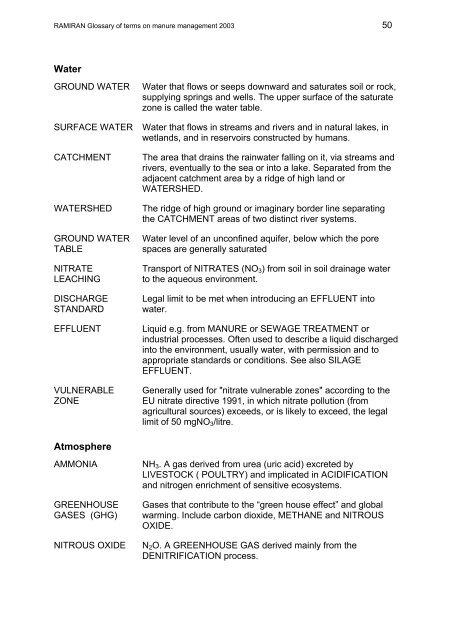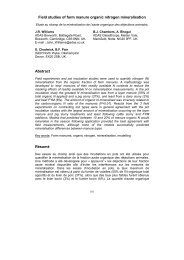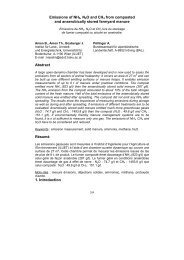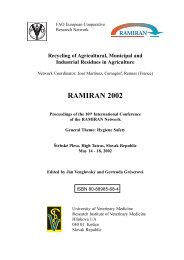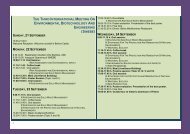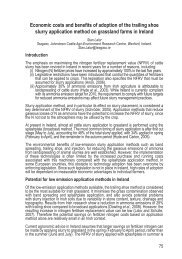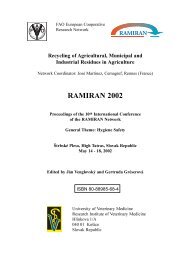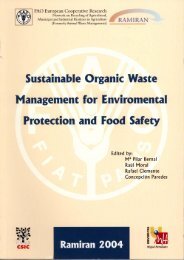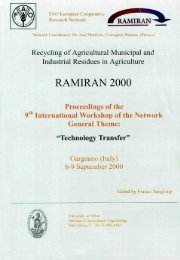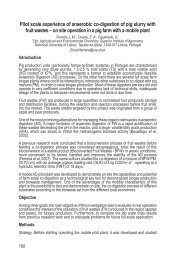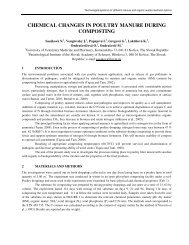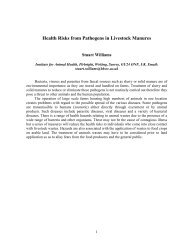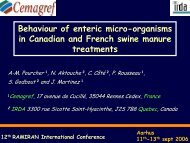Glossary of terms on livestock manure management 2003 - Ramiran
Glossary of terms on livestock manure management 2003 - Ramiran
Glossary of terms on livestock manure management 2003 - Ramiran
You also want an ePaper? Increase the reach of your titles
YUMPU automatically turns print PDFs into web optimized ePapers that Google loves.
RAMIRAN <str<strong>on</strong>g>Glossary</str<strong>on</strong>g> <str<strong>on</strong>g>of</str<strong>on</strong>g> <str<strong>on</strong>g>terms</str<strong>on</strong>g> <strong>on</strong> <strong>manure</strong> <strong>management</strong> <strong>2003</strong> 50<br />
Water<br />
GROUND WATER<br />
SURFACE WATER<br />
CATCHMENT<br />
WATERSHED<br />
GROUND WATER<br />
TABLE<br />
NITRATE<br />
LEACHING<br />
DISCHARGE<br />
STANDARD<br />
EFFLUENT<br />
VULNERABLE<br />
ZONE<br />
Water that flows or seeps downward and saturates soil or rock,<br />
supplying springs and wells. The upper surface <str<strong>on</strong>g>of</str<strong>on</strong>g> the saturate<br />
z<strong>on</strong>e is called the water table.<br />
Water that flows in streams and rivers and in natural lakes, in<br />
wetlands, and in reservoirs c<strong>on</strong>structed by humans.<br />
The area that drains the rainwater falling <strong>on</strong> it, via streams and<br />
rivers, eventually to the sea or into a lake. Separated from the<br />
adjacent catchment area by a ridge <str<strong>on</strong>g>of</str<strong>on</strong>g> high land or<br />
WATERSHED.<br />
The ridge <str<strong>on</strong>g>of</str<strong>on</strong>g> high ground or imaginary border line separating<br />
the CATCHMENT areas <str<strong>on</strong>g>of</str<strong>on</strong>g> two distinct river systems.<br />
Water level <str<strong>on</strong>g>of</str<strong>on</strong>g> an unc<strong>on</strong>fined aquifer, below which the pore<br />
spaces are generally saturated<br />
Transport <str<strong>on</strong>g>of</str<strong>on</strong>g> NITRATES (NO 3 ) from soil in soil drainage water<br />
to the aqueous envir<strong>on</strong>ment.<br />
Legal limit to be met when introducing an EFFLUENT into<br />
water.<br />
Liquid e.g. from MANURE or SEWAGE TREATMENT or<br />
industrial processes. Often used to describe a liquid discharged<br />
into the envir<strong>on</strong>ment, usually water, with permissi<strong>on</strong> and to<br />
appropriate standards or c<strong>on</strong>diti<strong>on</strong>s. See also SILAGE<br />
EFFLUENT.<br />
Generally used for "nitrate vulnerable z<strong>on</strong>es" according to the<br />
EU nitrate directive 1991, in which nitrate polluti<strong>on</strong> (from<br />
agricultural sources) exceeds, or is likely to exceed, the legal<br />
limit <str<strong>on</strong>g>of</str<strong>on</strong>g> 50 mgNO 3 /litre.<br />
Atmosphere<br />
AMMONIA<br />
GREENHOUSE<br />
GASES (GHG)<br />
NITROUS OXIDE<br />
NH 3 . A gas derived from urea (uric acid) excreted by<br />
LIVESTOCK ( POULTRY) and implicated in ACIDIFICATION<br />
and nitrogen enrichment <str<strong>on</strong>g>of</str<strong>on</strong>g> sensitive ecosystems.<br />
Gases that c<strong>on</strong>tribute to the “green house effect” and global<br />
warming. Include carb<strong>on</strong> dioxide, METHANE and NITROUS<br />
OXIDE.<br />
N 2 O. A GREENHOUSE GAS derived mainly from the<br />
DENITRIFICATION process.


